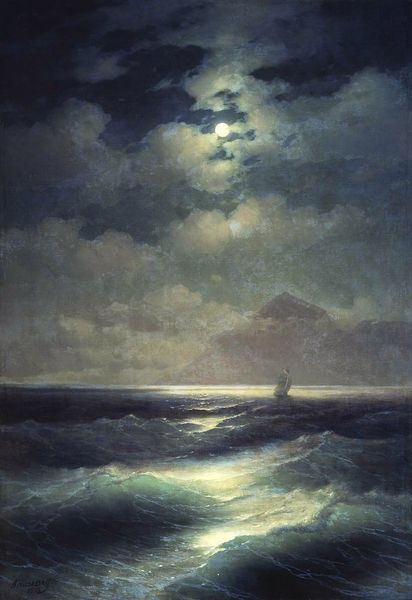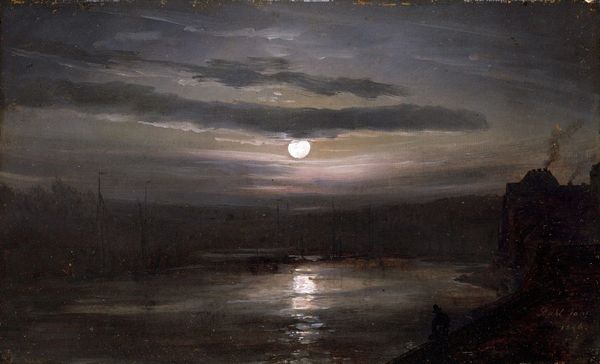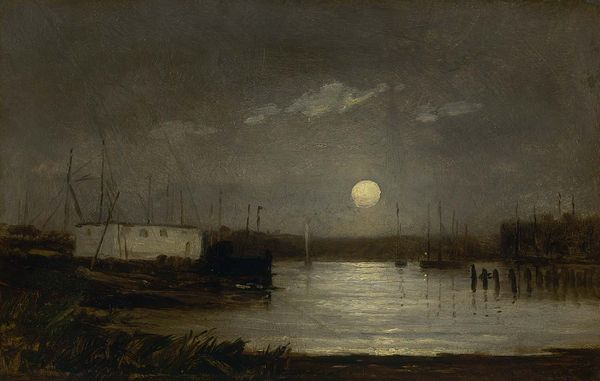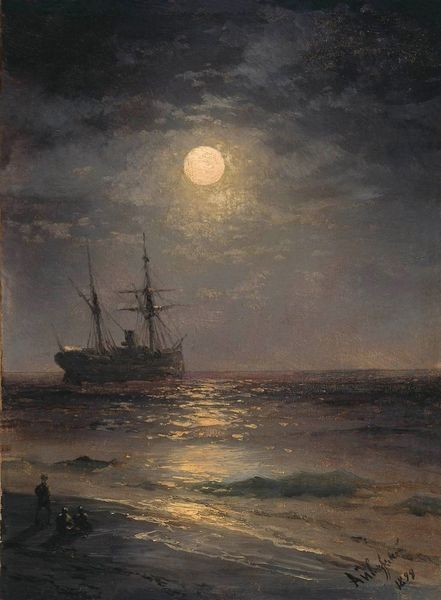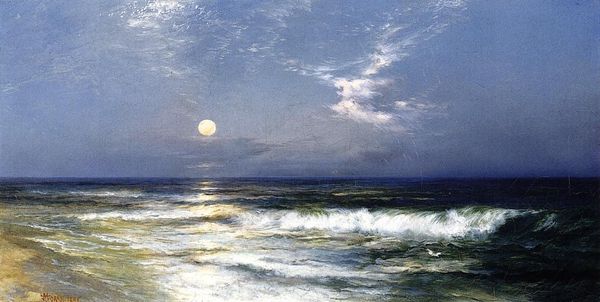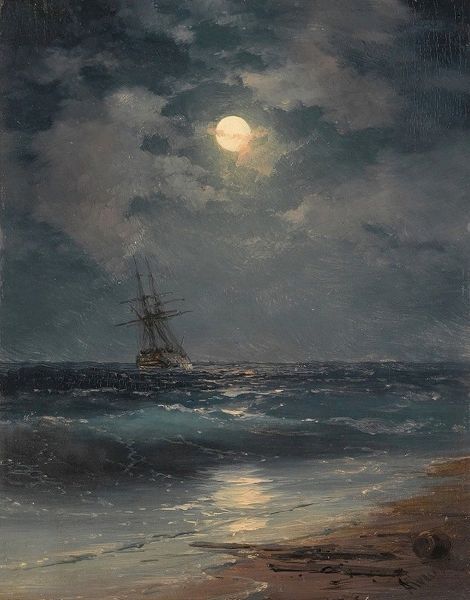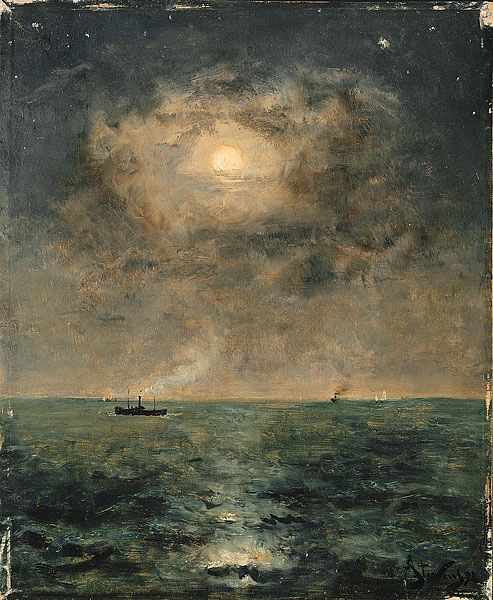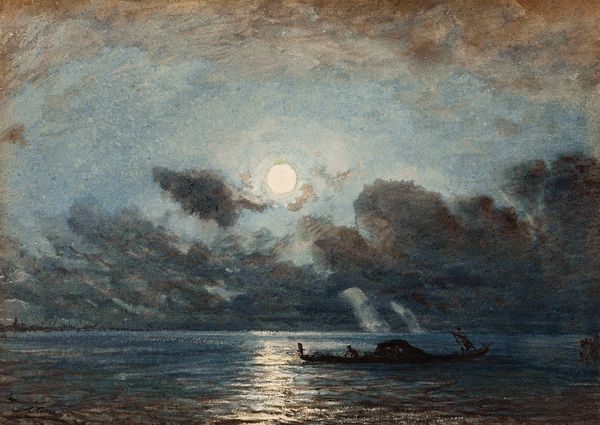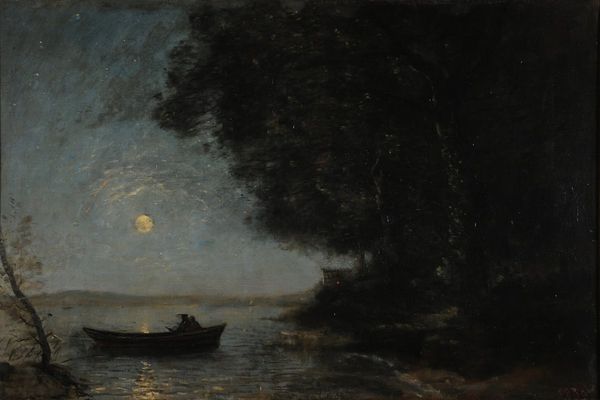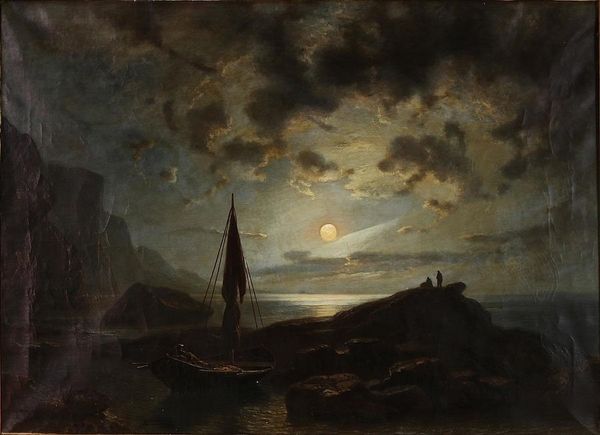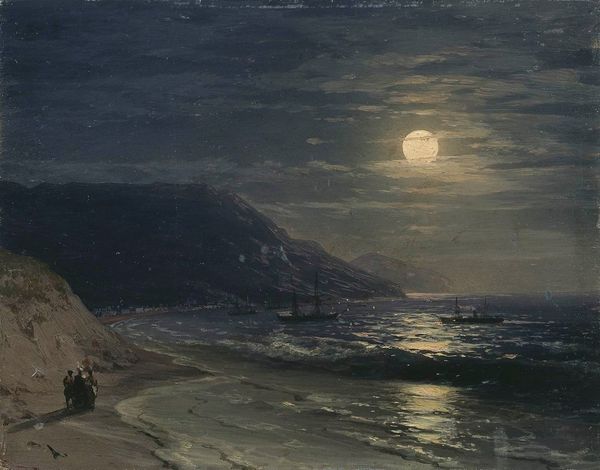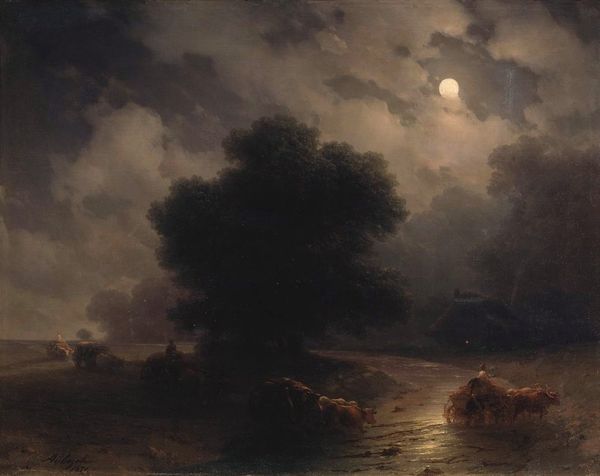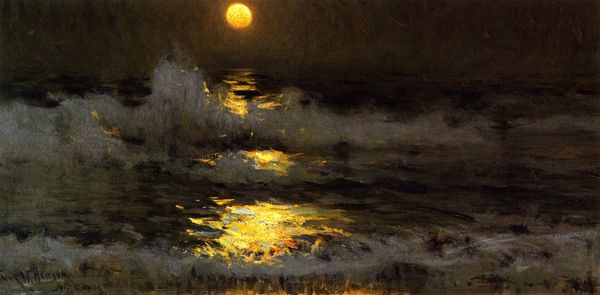
Dimensions: 100 x 76 cm
Copyright: Public domain
Curator: This is Ivan Aivazovsky's "The Black Sea at Night," painted in 1879. The canvas depicts a rather dramatic seascape illuminated by a full moon. Editor: Dramatic is right! The painting's immediate impact is almost theatrical; that stark contrast between the inky black clouds and the shimmering lunar path on the water… it’s a stage set. Curator: Indeed, the Romantic era often used nature to mirror human emotion. Note how the moon, a symbol of cyclical change, casts its light upon the turbulent sea—reflecting perhaps the ebbs and flows of life's journey, or the darker, subconscious currents of our minds. Editor: It’s interesting how Aivazovsky handles light here. The impasto in the water reflects and refracts in a dazzling dance, it’s almost hyperrealist when considering the broad strokes that build the ominous clouds above. Curator: Aivazovsky was celebrated for his ability to capture light. The moon isn't just a light source here; it’s a focal point charged with meaning. Across cultures, it embodies femininity, intuition, and the passage of time. I also notice the tiny ship far away…perhaps symbolizing human resilience against the vastness and indifference of nature? Editor: I think the size contrast only accentuates the painterly surface. The scale reminds us that this is paint, carefully placed to evoke mood, not a literal transcription of nature. Its power exists within its formal arrangement. Curator: Perhaps a reflection of our own interpretations? After all, isn't that what these enduring artworks are capable of, endlessly mirroring our hopes and fears across time? Editor: Exactly. "The Black Sea at Night" gives form to the interplay of light and shadow, offering a glimpse of infinity carefully shaped by the hand and vision of an artist.
Comments
No comments
Be the first to comment and join the conversation on the ultimate creative platform.
